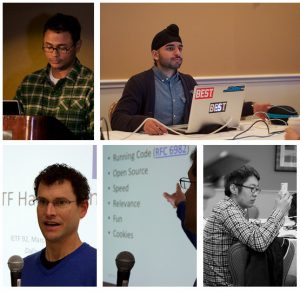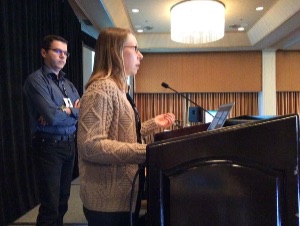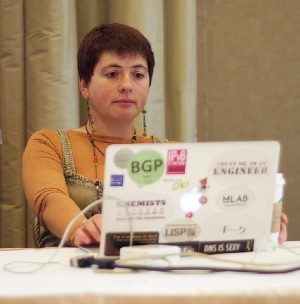 On this final day of IETF 92 our Deploy360 attention will be focused on only one working group, EPPEXT, that is looking at communication between registries, registrars and other entities working with domain names. There only two blocks of working group sessions today… and then everyone heads home! Here’s what this abbreviated day looks like for us…
On this final day of IETF 92 our Deploy360 attention will be focused on only one working group, EPPEXT, that is looking at communication between registries, registrars and other entities working with domain names. There only two blocks of working group sessions today… and then everyone heads home! Here’s what this abbreviated day looks like for us…
NOTE: If you are unable to attend IETF 92 in person, there are multiple ways to participate remotely.
The sessions in the first 0900-1130 CDT block are not ones that we typically follow. I may be monitoring CORE, as it deals with Internet of Things (IoT) issues, or perhaps MMUSIC as there is a draft dealing with IPv4 vs IPv6 connectivity.
Finally, in the very last 1150-1320 session, the Extensible Provisioning Protocol Extensions (EPPEXT) working group will be meeting in the Oak Room. I mentioned EPPEXT in my Rough Guide to IETF 92 post but at the time the agenda was not available. The IETF 92 agenda is now available, and it includes:
- Extension Registry for the Extensible Provisioning Protocol (RFC7451)
- Status of existing documents
- the Registrations Operation Workshop held this past Sunday
One of the existing documents of interest to us is one that helps with the automation of relaying DNSSEC key material between DNS operators. We’re also just interested in general with steps that can help automate the communication among these various entities.
And then… with that… IETF 92 will draw to a close!
Many thanks for reading along this week… please do read our other IETF 92-related posts … and we’ll see you at IETF 93 in Prague in July!
Relevant Working Groups:
- eppext (Extensible Provisioning Protocol Extensions) WG
Friday, 27 March 2015, 1150-1320 CDT, Oak
Agenda: https://datatracker.ietf.org/meeting/92/agenda/eppext/
Documents: https://datatracker.ietf.org/wg/eppext/
Charter: https://datatracker.ietf.org/wg/eppext/charter/
For more background on what is happening at IETF 92, please see our “Rough Guide to IETF 92″ posts on the ITM blog:
- Rough Guide to IETF 92: Welcome to Texas, Y’all!
- Routing Resilience and Security
- Scalability & Performance
- IPv6
- DNSSEC, DANE, and DNS Security
- Trust, Identity, and Privacy
- Strengthening the Internet
If you are at IETF 92 in Dallas, please do feel free to say hello to our Chris Grundemann. And if you want to get started with IPv6, DNSSEC or one of our other topics, please visit our “Start Here” page to find resources appropriate to your type of organization.
Image: some of the faces and scenes appearing in Olaf Kolkman’s collection of IETF 92 photos. Used with his permission.
The post Deploy360@IETF92, Day 5: EPPEXT… and we’re done! appeared first on Internet Society.


 This
This  This
This 


